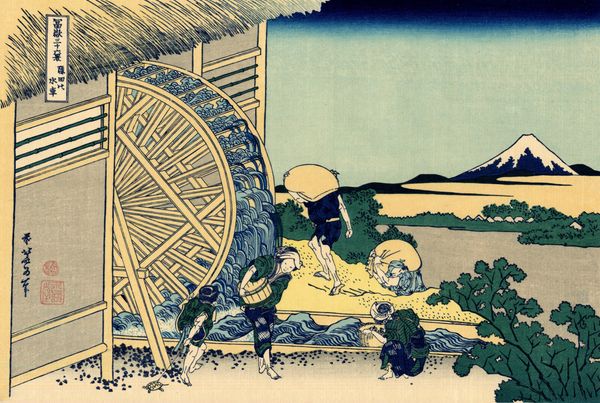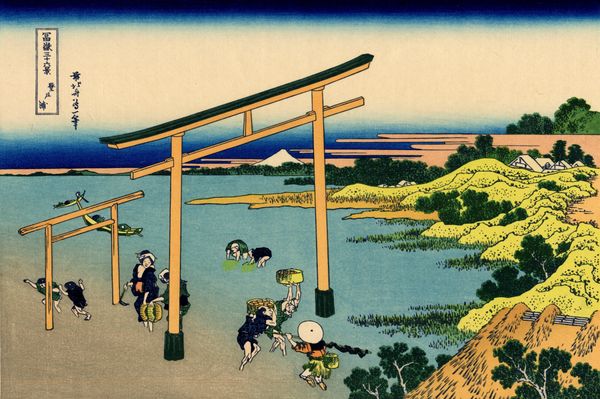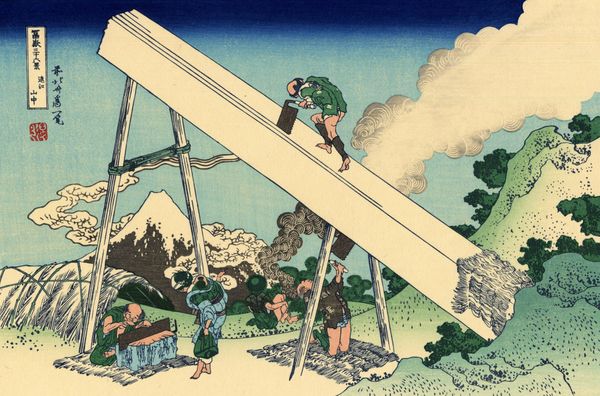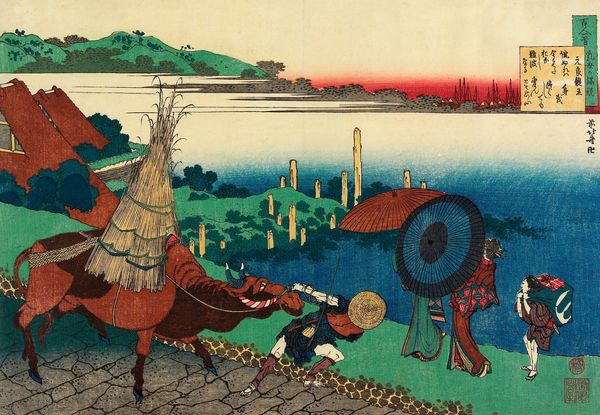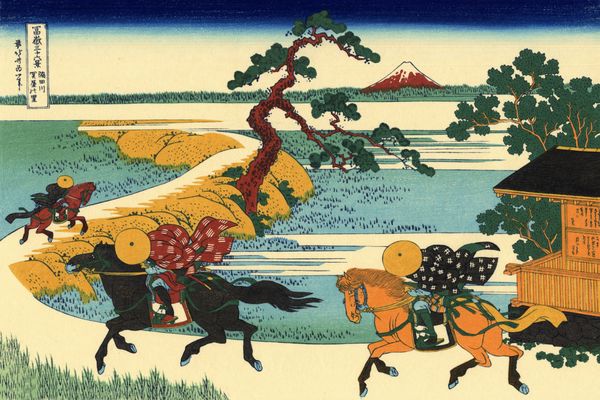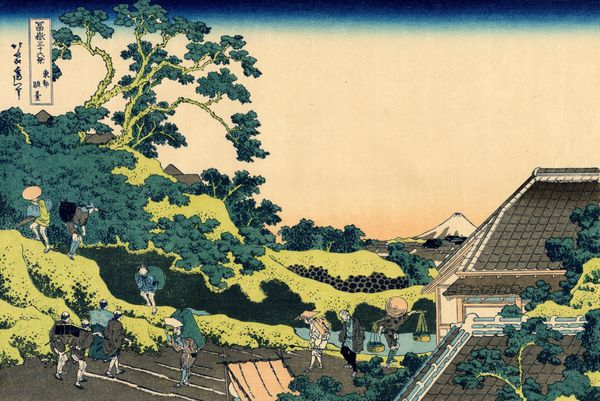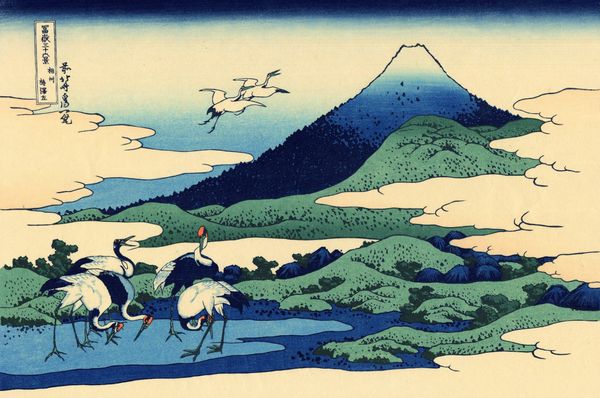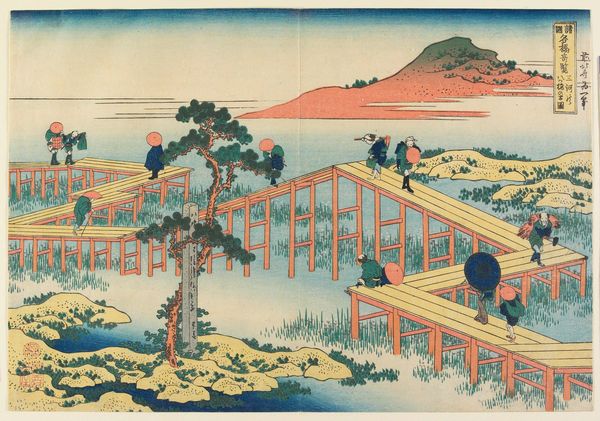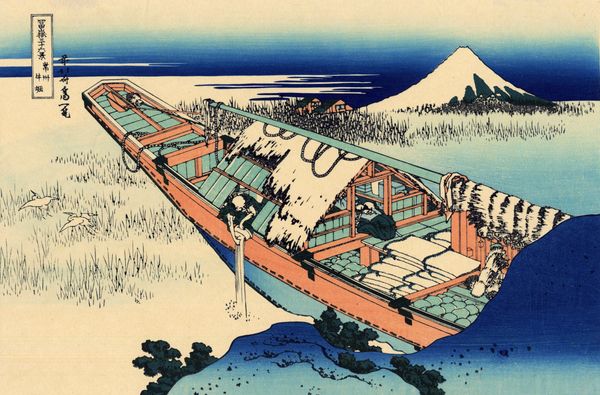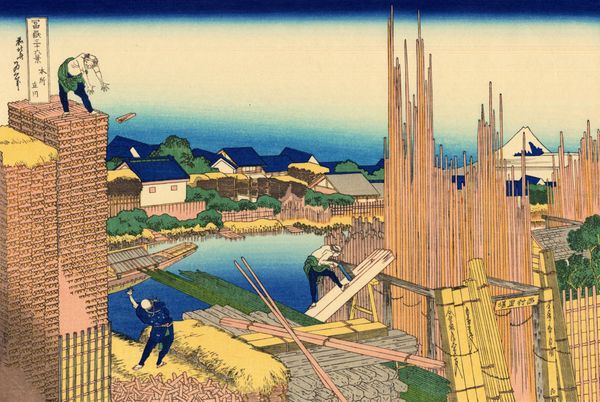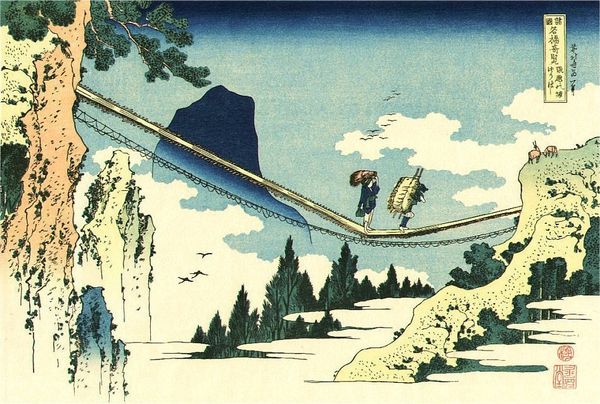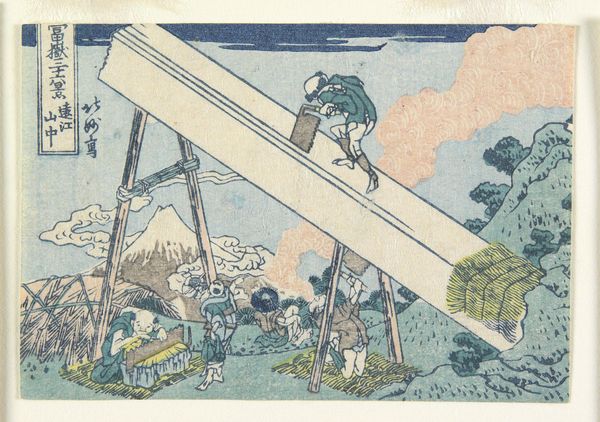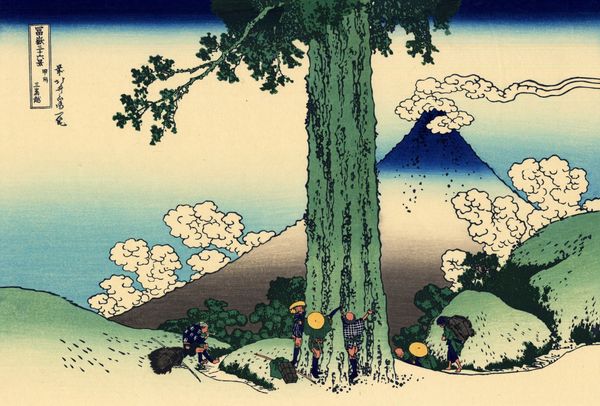
print, watercolor, woodcut
#
blue ink drawing
# print
#
asian-art
#
landscape
#
ukiyo-e
#
watercolor
#
mountain
#
woodcut
#
watercolour illustration
Copyright: Public domain
Welcome, art lovers! Today we're diving into Hokusai's "Fuji View Field in Owari Province." That enormous barrel is just captivating, isn't it? It makes me wonder what the artisan is feeling, working within such a dominant shape. Indeed, it’s a masterful composition by Katsushika Hokusai, from his renowned series "Thirty-six Views of Mount Fuji," dating to around 1830-1832. This is a classic ukiyo-e woodblock print. The cooper's absorption in his task, framed by the very object he's creating, speaks volumes about labor in Edo-period Japan. It’s like the barrel is a giant eye looking out at Mount Fuji! It makes me feel the scale of both the task and the landscape. What’s the obsession with Fuji always being there, peeking through? Mount Fuji is a potent symbol in Japanese culture – sacred, a source of national identity, and an object of aesthetic contemplation. Hokusai’s series capitalized on a burgeoning domestic travel culture, offering diverse, sometimes unexpected views of the mountain. The technique itself, multi-color woodblock printing, allowed for these accessible and vivid images, with Hokusai famously incorporating the new Prussian blue pigment. I find that circular frame so clever; it’s almost like a snapshot, a moment perfectly captured. It’s humble, yet so grand. I often use circular motifs in my own work to suggest wholeness or a cycle. Hokusai was revolutionary in his use of such framing devices. The barrel here isn't just an object; it’s a dynamic compositional tool that directs our gaze and creates a sense of depth, contrasting human industry with the eternal presence of Fuji. This innovative approach to landscape and genre scenes significantly impacted later artists, not just in Japan but also in the West, fueling the Japonisme movement. It’s truly a window into another time, yet feels so present. The craftsmanship, the quiet dignity of the worker, and that iconic mountain – it’s a whole story in one image. Precisely. Its enduring impact lies in its ability to elevate a scene of everyday labor into a profound artistic statement, capturing the spirit of its age while resonating with universal themes of work, nature, and perspective.
Comments
No comments
Be the first to comment and join the conversation on the ultimate creative platform.
